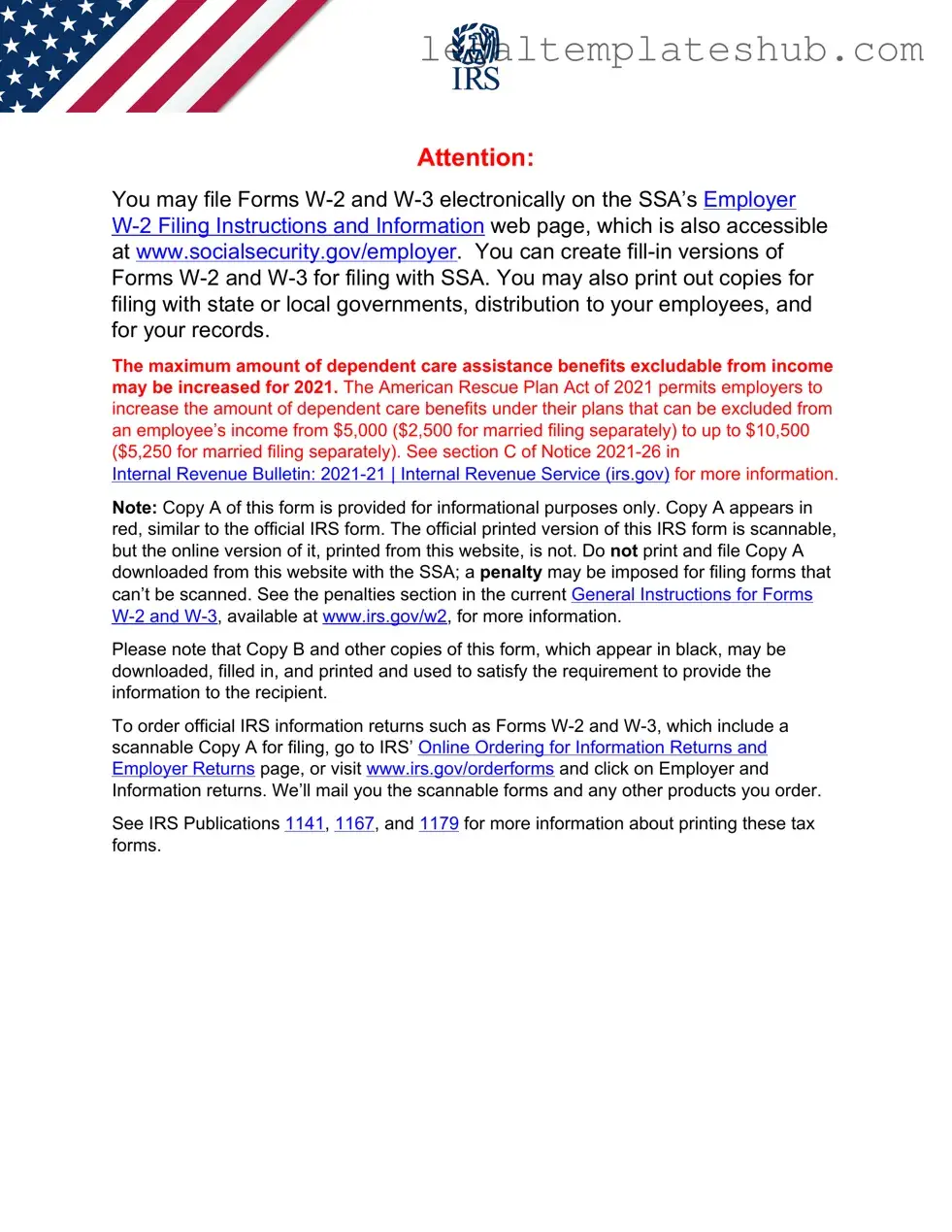Blank IRS W-2 PDF Form
The IRS W-2 form is a crucial document that employers use to report an employee's annual wages and the taxes withheld from their paycheck. This form provides essential information for employees to accurately file their income tax returns. Understanding the W-2 form is vital for ensuring compliance and maximizing tax benefits; click the button below to start filling out your form.
Access Editor
